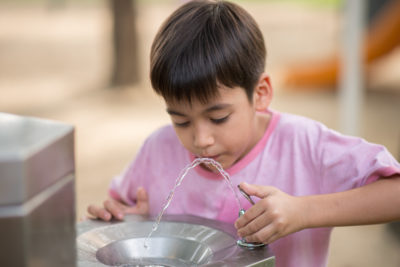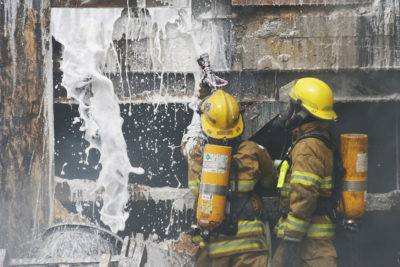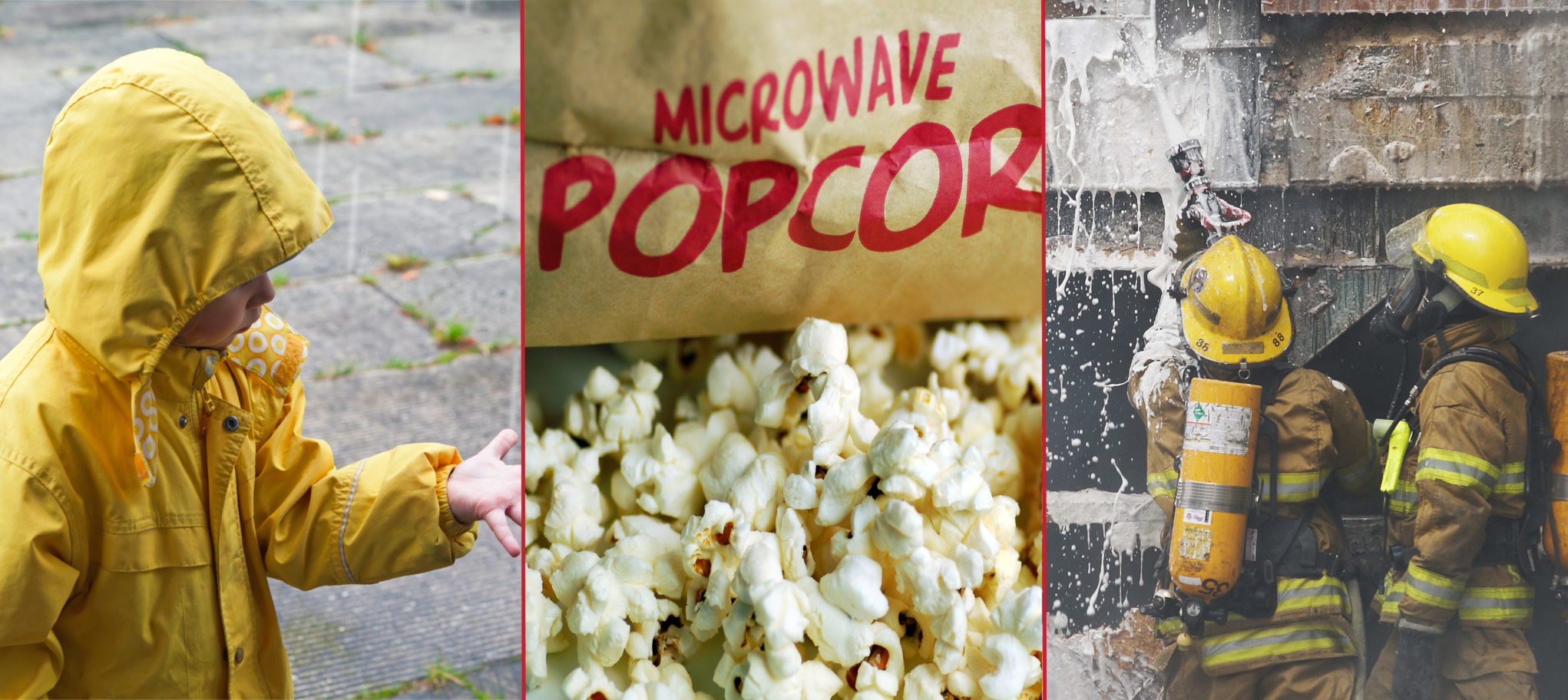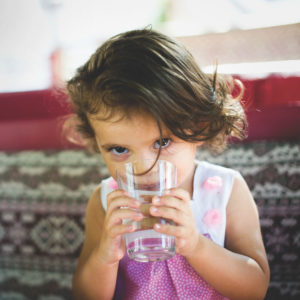WHAT ARE PFAS?
Per and poly-fluoroalkyl substances, or PFAS, are a class of nearly 12,000+ chemicals used in nonstick, stain-resistant, and water-proof coatings in numerous everyday products.
Everywhere Chemicals
Food packaging, like takeout containers and microwave popcorn bags, stain resistant carpeting and furniture, waterproof clothing, and even foam used to fight fires and firefighting gear, contain these toxic chemicals.
This widespread use means PFAS lurk nearly everywhere- in our homes and environment- and that we are exposed almost daily.
Virtually Indestructible Chemicals
Once PFAS are created, they don’t go away easily. The same properties that make these chemicals able to repel water and grease also make them last a very long time. In fact, PFAS chemicals can persist in the environment for such a long time that some scientists call them “virtually indestructible.” They last a long time in our bodies too. Research shows that some PFAS can stay in our bodies for up to 8 years or more.
Harmful Chemicals
Growing scientific evidence shows these chemicals aren’t good for our health. PFAS are associated with kidney and testicular cancer, hormone disruption, liver and kidney toxicity, harm to the immune system, and reproductive and developmental toxicity.
In Our Bodies

Nearly 99% of Americans are predicted to have PFAS in their bodies. Babies are born with PFAS in their bodies, contaminated from exposures in the womb. These chemicals are even found in breastmilk.
In Our Drinking Water

At least 1 in 20 Americans have PFAS chemicals in their drinking water, but other estimates are even higher. Scientists estimate that over 200 million Americans, more than 60% of the country’s population, are drinking water contaminated with PFAS. In some communities, especially those around military bases and airports, firefighting foams made with PFAS are the source of contaminated drinking water. Communities near PFAS production facilities and factories manufacturing products containing or using PFAS also face extensive drinking water contamination.
In Our Food

The PFAS found in take out containers and other food packaging migrates into the food you eat. Hunters are being warned not to eat deer because they are contaminated. Minnesota and Wisconsin have advised their residents to limit the number of fish they eat because of PFAS contamination. In Michigan, ranchers have seen their beef cattle contaminated due to polluted wastewater ending up in fertilizer. Additionally, farms in Maine are being forced to shut down due to polluted sludge spread on their land decades ago.
In Firefighters

Firefighters can be exposed when they train with or use firefighting foams. Firefighters are also concerned about the use of PFAS in their protective gear. According to the International Association of Fire Fighters, firefighters are more likely to be afflicted with some forms of cancer, making cancer the leading cause of death of firefighters. This increased incidence may be due to exposures to various chemicals on the job.
In the Environment

PFAS used in products in our homes, like carpeting and clothing, get into indoor air, house dust that we breathe and ingest, or get washed down the drain into waterways. When treated food packaging is composted or landfilled, or other treated products are landfilled, they become long-term sources of PFAS to the environment. PFAS have been found in fresh and salt water environment, in wildlife, and in soil.



